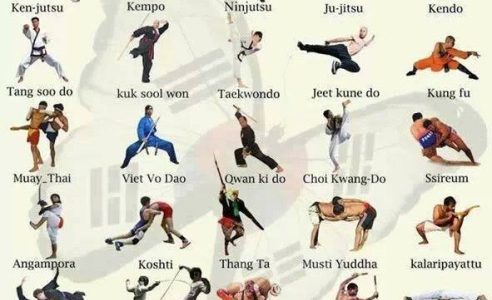Typical Martial Arts Vs. Modern Combat Sports: Comprehending The Key Distinctions
Typical Martial Arts Vs. Modern Combat Sports: Comprehending The Key Distinctions
Blog Article
Short Article Written By-Camp Fink
When you think about martial arts, do you lean extra towards the traditional practices or the contemporary fight sports? Each course offers one-of-a-kind advantages and experiences, formed by their ideologies and training approaches. Typical martial arts stress personal growth and discipline, while modern combat sporting activities concentrate on competitors and efficiency. Recognizing these distinctions can lead you in selecting the right technique for your trip. However how do these distinctions show up in training and approach?
The Ideology and Background Behind Standard Martial arts
While lots of people link martial arts with physical combat, the ideology and background behind typical martial arts run much deeper. You'll discover that these self-controls emphasize individual development, discipline, and regard.
Originating from old techniques, typical martial arts were often created for Self-Defense and spiritual development. They embody principles such as equilibrium, consistency, and self-discipline, assisting professionals beyond plain battling skills.
As you educate, you'll not only find out methods yet additionally gain insights right into the culture and worths that formed these arts. The routines and practices, commonly given via generations, cultivate a feeling of area and belonging.
The Affordable Nature of Modern Combat Sports
Modern combat sports have actually changed the landscape of martial arts right into a very competitive arena, where professional athletes take on in a test of skill, technique, and endurance.
You'll observe that competitions are typically arranged with rigorous guidelines and policies, guaranteeing fair play and safety. These events attract huge audiences, sustaining the exhilaration and strength of matches.
read full article educate rigorously, not just for physical expertise but additionally for mental strength, understanding that every information counts in the ring. The adrenaline thrill during competitors is apparent, as fighters push their limits to declare success.
Followers value the athleticism and virtuosity involved, making contemporary fight sports a thrilling spectacle that remains to advance and astound fanatics around the globe.
Training Techniques and Strategies: A Relative Analysis
The competitive atmosphere of contemporary battle sports demands ingenious training methods that vary substantially from traditional martial arts.
In modern training, you'll concentrate on particular techniques, competing, and conditioning, usually making use of drills that replicate actual battle situations. please click the following article 'll see a focus on measurable performance and constant competitors to analyze your skills.
On the other hand, traditional martial arts focus on kinds, katas, and thoughtful teachings, commonly highlighting discipline and regard over competition.
Training is generally much less intense and may include repeated method instead of real-time sparring.
While both strategies develop ability and health and fitness, modern combat sporting activities give a much more dynamic and adaptable training atmosphere, preparing you for prompt difficulties in the ring or cage.
Choose the path that straightens with your objectives and passions.
Conclusion
In choosing between conventional martial arts and modern-day combat sports, it really comes down to what you value the majority of. If you're looking for individual growth, technique, and a feeling of community, typical arts could be your best fit. However if you flourish on competition and real-time difficulties, modern-day fight sporting activities could be the way to go. Eventually, both courses supply special advantages, so it's all about straightening your training with your individual goals and interests.
